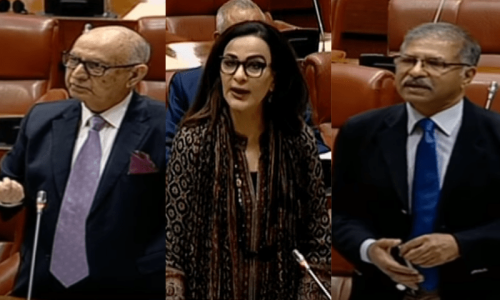
ISLAMABAD: The gap between male and female voters has climbed to 12.54 million, with just two districts of Punjab accounting for over 1m of the difference.
An analysis of the latest district-wise statistics of voters released by the Election Commission of Pakistan (ECP) shows that Lahore district continues to be in the lead with a gap of 616,945 between male and female voters, who number 3.05m and 2.43m respectively.
In Faisalabad, the number of male voters is 2.47m and that of women a little over 2m, reflecting a gap of 479,484.
The 20 districts with the largest gender gaps include 17 districts of Punjab, two of Khyber Pakhtunkhwa and one of Sindh.
Read: A look into the turnout of women voters for the 2018 elections
Of the 17,798 registered voters in erstwhile FR Bannu, only 3,949 are women
In Gujranwala, the number of male voters is 1.57m compared to 1.2m women voters; the difference between them comes to 368,557.
In Rahim Yar Khan, the number of male and female voters is 1.38m and 1.04m, respectively; the difference is 342,744.
In Karachi (West), the difference is 334,227 as the district has 1.02m male and 691,870 women voters.
In Sheikhupura, the number of male voters is slightly over a million with 735,651 women. The difference is 271,121.
In Sialkot district, the number of male voters is 1.32m with 1.06m women. The difference is over 260,000.
Kasur and Peshawar are next in line with a gap of 262,544 and 261,140, respectively.
There is a gap of 230,673 in Bahawalnagar, 222,582 in Multan, 221,513 in Sargodha, 212,445 in Vehari, 211,372 in Bahawalpur, 209,262 in Okara and 202,363 in Khanewal.
In Mardan, the gap is a little short of 200,000, while Jhang, Gujrat and Rawalpindi districts have a gap of 179,150, 168,486 and 167,558, respectively.
The women representation among voters is lowest in erstwhile Frontier Region Bannu at 22 per cent, followed by 31pc in North Waziristan, 34pc in Kohlu, 36pc in Qila Abdullah and 38pc each in Dera Bugti and South Waziristan.
In contrast, women account for 49pc of the total voters in Chakwal district and 48pc in Jhelum and Sohbatpur.
In Rawalpindi, Khushab, Attock and Islamabad, the women’s share is 47pc.
In FR Bannu, of the 17,798 registered voters, the number of female voters is as low as 3,949.
In the 2013 general elections, the gap between male and female voters was 10.97m which jumped to 11.65m in September 2015, at the start of the local government elections.
There were 86.24m registered voters in 2013 — 48.61m of them men and 37.63m women. The figures released in September 2015 showed that the number of registered voters had gone up to 93.06m. There were 52.36m male voters and 40.7m female voters which meant that the registration of women voters had not kept pace with that of men.
The number of voters prior to 2018 elections was 97.01m — 54.5m of them men and 42.42m women. More than 10m voters have been added to the lists since then, taking the total number to over 107m. They include 60.02m male and 47.48m female voters.
Published in Dawn, April 15th, 2019












































